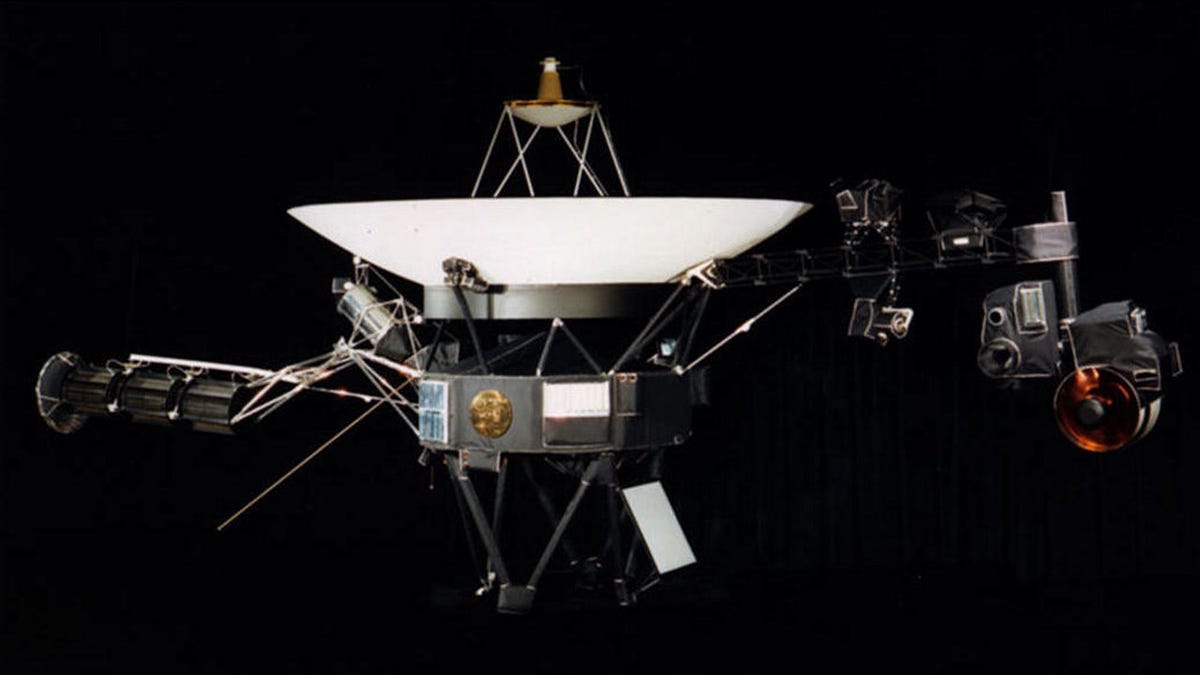NASA's Voyager 1 Space Probe From the '70s Troubled by Mysterious Glitch
The farthest spacecraft from Earth is beaming back weird telemetry data.

A NASA illustration shows a Voyager spacecraft.
NASA's 45-year-old Voyager 1 spacecraft, a marvel, is cruising along outside our solar system and still staying in touch with Earth. But it's presented its team with what NASA is calling a "mystery." It's operating normally but sending back some weird telemetry data.
The issue likely traces to Voyager 1's attitude articulation and control system (AACS), which handles its orientation in space , including the task of keeping its antenna pointed at Earth
"All signs suggest the AACS is still working, but the telemetry data it's returning is invalid. For instance, the data may appear to be randomly generated, or does not reflect any possible state the AACS could be in," NASA's Jet Propulsion Lab said in a statement Wednesday.
The data isn't making sense, but Voyager 1 is maintaining a clear line of communication with home and the problem hasn't triggered a protective "safe mode."
The twin spacecraft Voyager 1 and Voyager 2 launched in the 1970s and have long outlasted their expected lifespans. They're both in interstellar space, which Voyager 1 and 2 project manager Suzanne Dodd describes as a "high-radiation environment that no spacecraft have flown in before."
Voyager 1 is roughly 14.5 billion miles (23.3 billion kilometers) away from home. It takes a couple days to send a signal and then hear back, which adds to the challenge of understanding what's going on. This leaves NASA with a whole lot of unknowns. Is the AACS the culprit or is another system experiencing a glitch? Will Voyager 1 be able to continue its science mission?
There are ways forward from this glitch. Voyager 1 may just live with it. Or a software fix or a switch to backup hardware could be the solution. NASA hopes both Voyagers will continue to send back science data beyond 2025.
Said Dodd, "A mystery like this is sort of par for the course at this stage of the Voyager mission."

